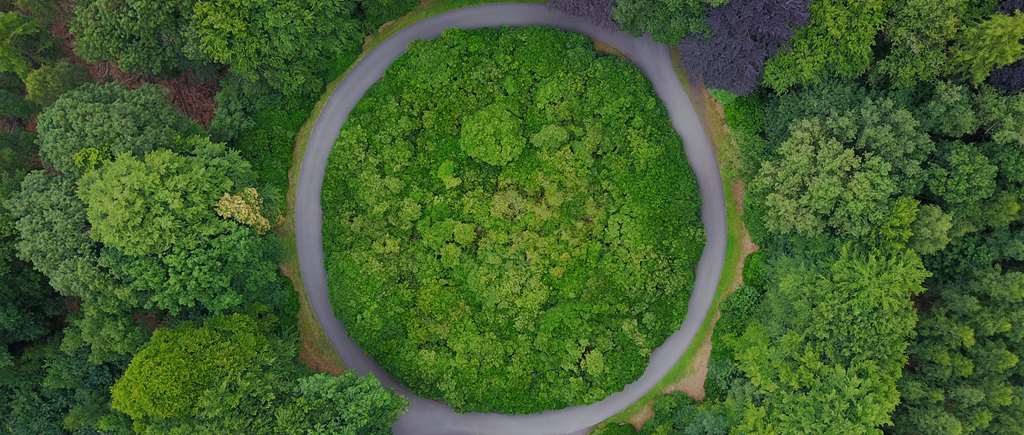In a circular economy, the aim is to make the best possible use of society’s resources for as long as possible, simply explained by the 3 R’s: Reduce, Re-use and Recycle.

Circular economy and cascading use of biomass
This can be done through the high utilisation of raw materials, reducing waste, emissions and the use of energy, as well as by reusing and recycling products.
One of the basic principles is eco-design; to design products in a way that ensures that materials can be recovered more efficiently and to view waste as a resource.

Transition to a circular economy
High raw materials utilisation, including efficient utilisation of sidestreams and cascading use are cornerstones of a circular economy. In this context, cascading means that the sidestream from one process is used as feedstock for the next. In this way, we gain more value-added by utilising the raw material for multiple products rather than producing just one product. The value-added and environmental contributions, including climate benefits, in this concept is higher than utilising the wood for energy purposes only.

Cascading use
Cascading use can both materialise within a cluster of companies and within an integrated production set-up.
In Norwegian forest-based industries, all parts of the tree are utilised for products. Wooden construction material is the main driver for harvesting trees in Norway. The most valuable part of the tree is used for this purpose. 25% of the wood entering the sawmills becomes residuals in the form of wood chips to our industry. The remaining part of the tree and the residual wood chips from the sawmills are raw materials for Borregaard’s sustainable, high value products.
Borregaard’s biorefinery is an extraordinary cascading operation where wood, which consists of fibres, lignins,
and sugars, is converted into cellulose and a variety of other valuable products. The sidestream from the
cellulose production is first utilised in the production of bioethanol before the rest is converted into lignin-based biopolymers. Parts of the lignin are also used in the production of biovanillin, and parts of the cellulose are converted into cellulose fibrils. Some sidestreams from production are sold to other industries, which in turn use them as raw materials in their production. Knot pulp, which is removed from the cellulose and utilised for packaging materials and bark for soil conditioning, are examples of such utilisation. The sidestreams that can not be utilised for products are converted into biogas or biomass used for energy in the production processes.
By using sidestreams to produce valuable biochemicals and biomaterials, we secure high resource efficiency of the renewable raw material sourced, which is key to the low-carbon circular bioeconomy.
Borregaard’s most important raw material, Norway spruce, is harvested from certified forests. We source wood from nearby forests by sustainable transportation, in which health and safety, emissions and costs are considered. In this way, Borregaard, together with external suppliers and customers, is part of a complex and well-established cascading system for bio-based products, intermediate products and sidestreams.
In other words, the Norwegian forestry sector and Borregaard’s biorefinery are built on the principles of
both cascading and circular use.
Borregaard contributes to strengthen circular value chains and promote circularity by offering sustainable
solutions. Some of our products are used in sectors that have a high use of resources and where the potential for circularity is high, such as within electronics, batteries, vehicles, packaging, plastics, textiles, construction, food, water and nutrients. We promote circularity by offering sustainable solutions within these areas. Considering our products are based on a renewable, non-toxic raw material, they represent no negative impact when the end products are recycled.
High raw materials utilisation
The concept of utilising all parts of the harvested tree for valuable products such as building materials from
sawmills and our bio-based chemicals, contributes to a high raw material utilisation. Borregaard’s biorefinery
concept demonstrates high raw material utilisation where 94% of the sourced wood is utilised, of which 82%
is turned into commercial products and 12% is used for energy. As a result, high resource usage and circular
economy is integrated into our business model.

